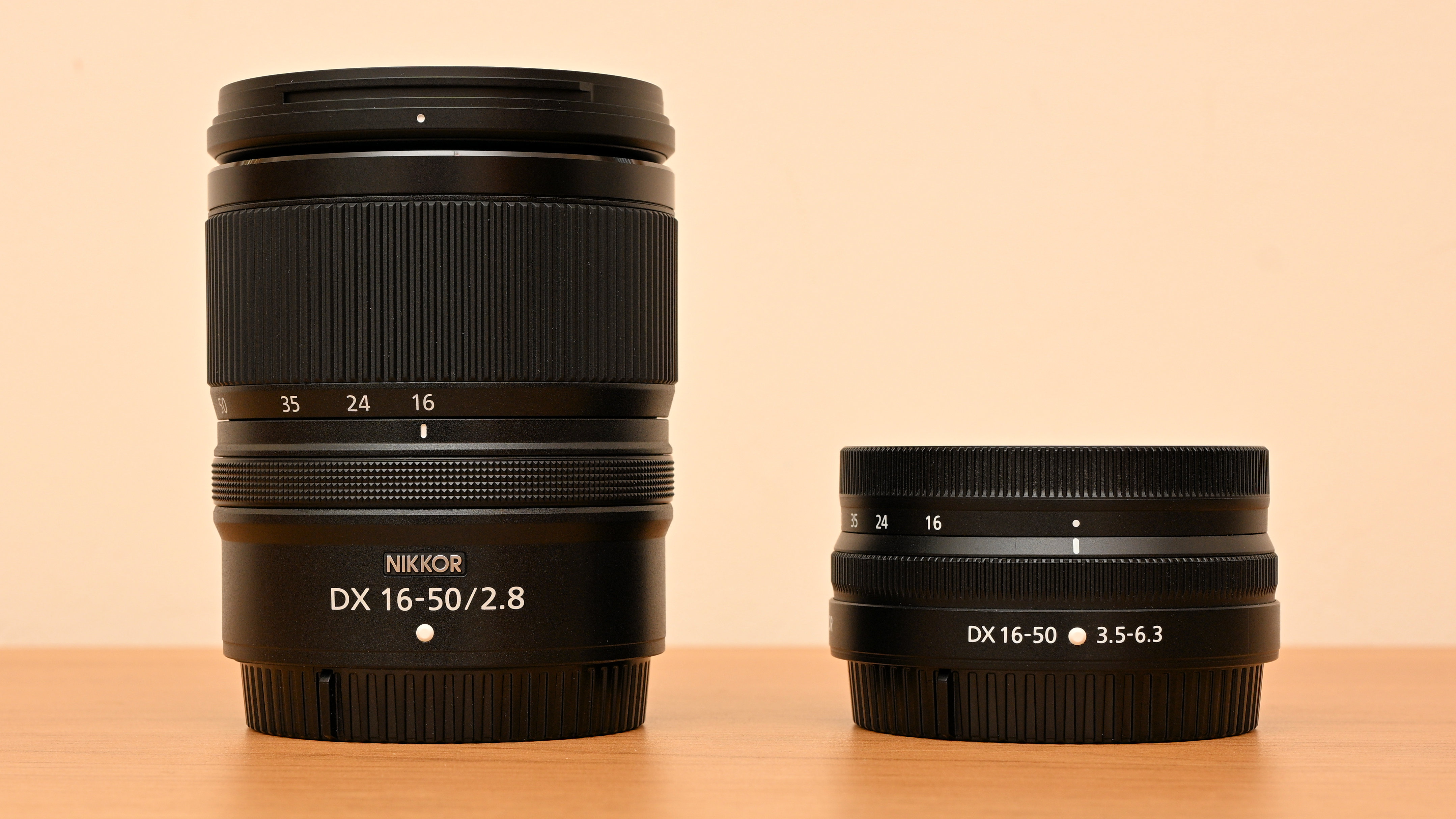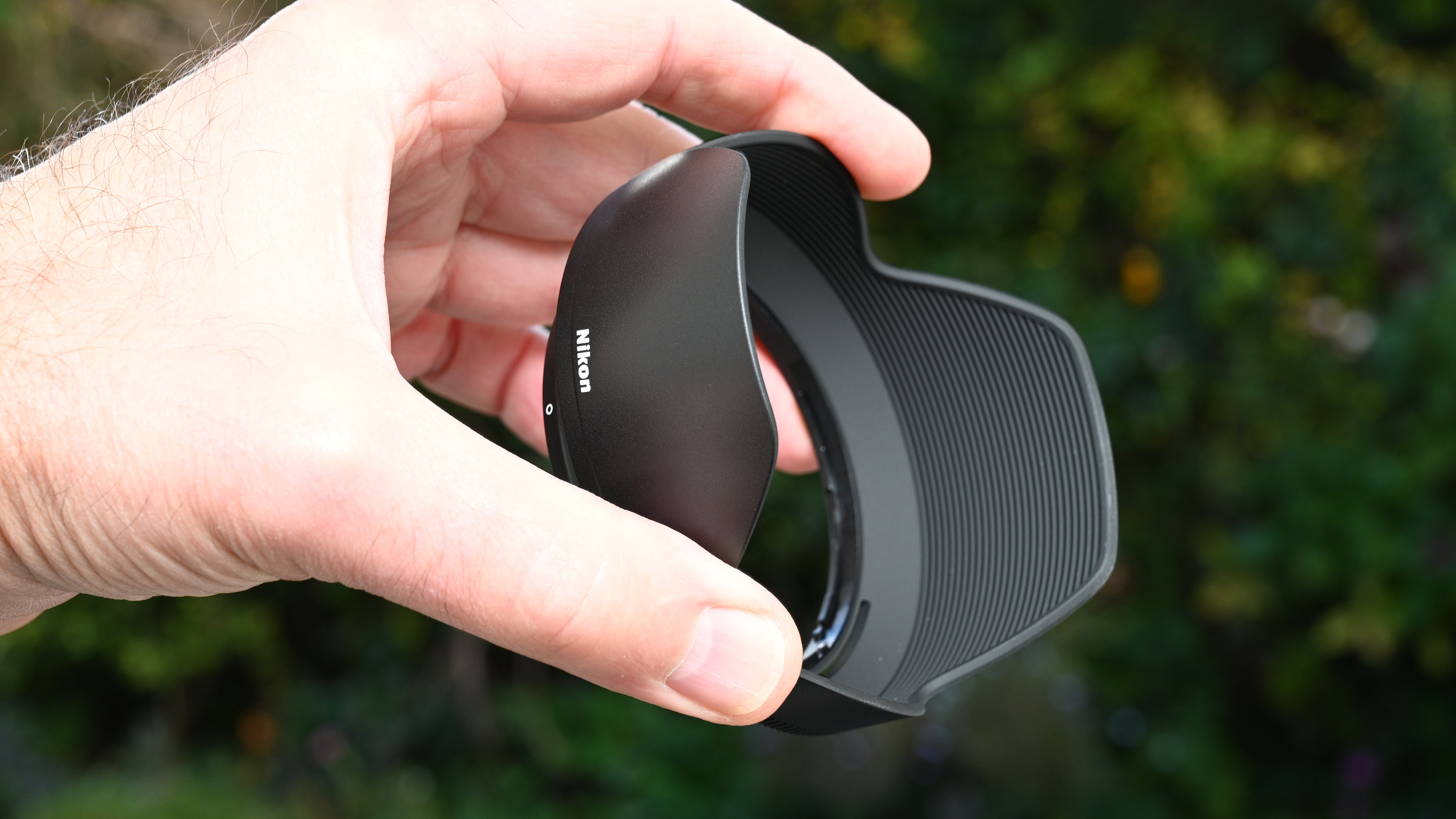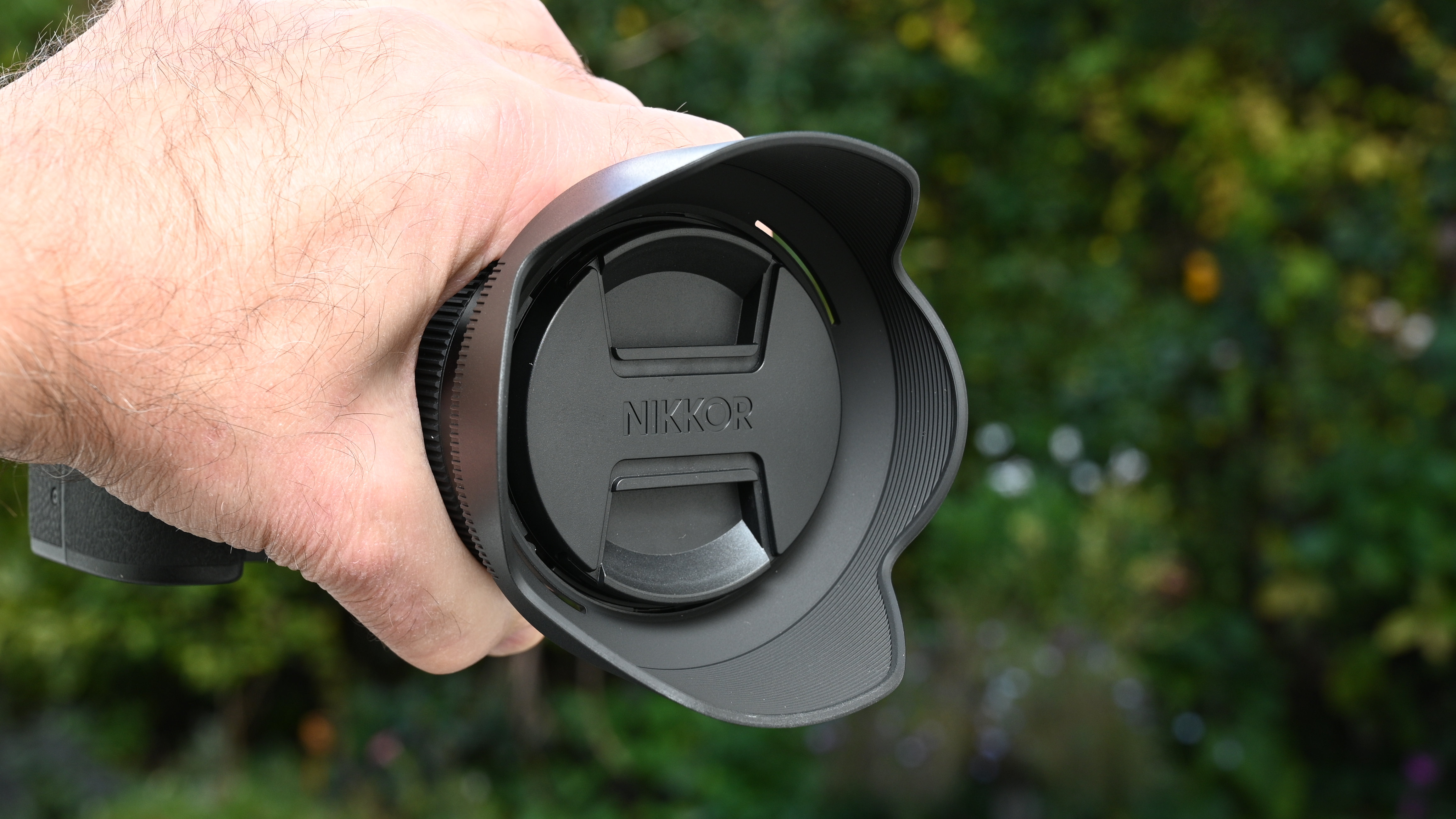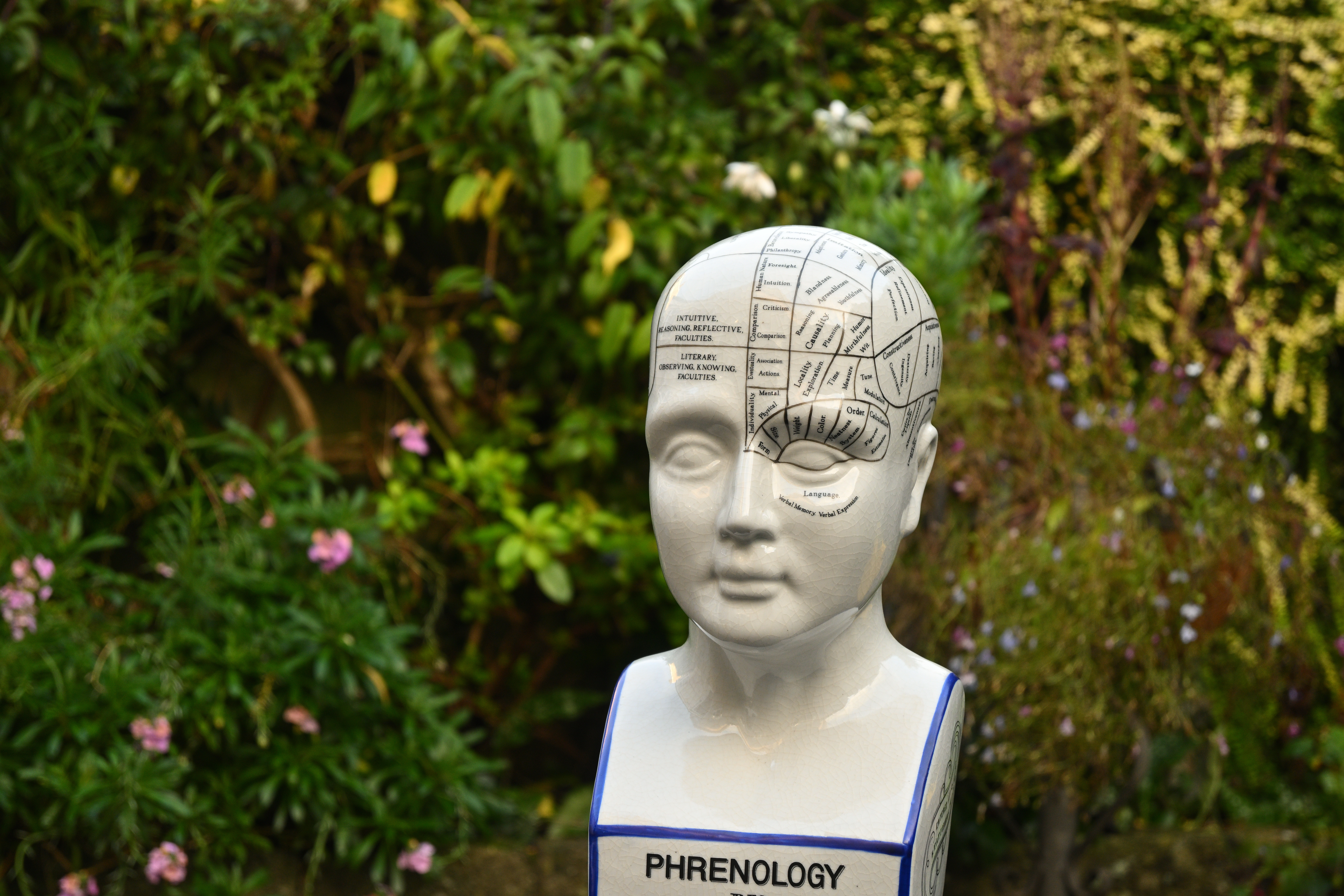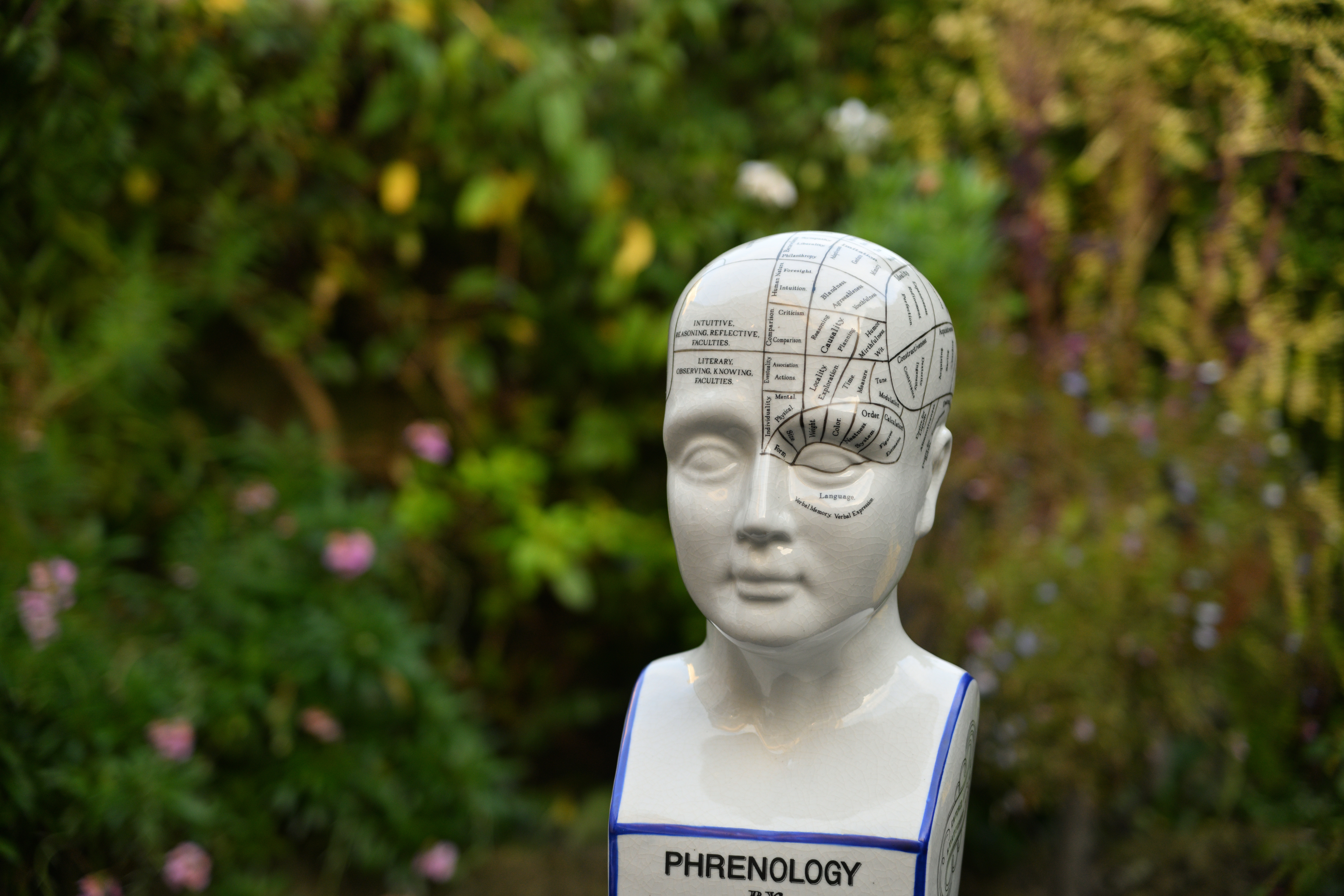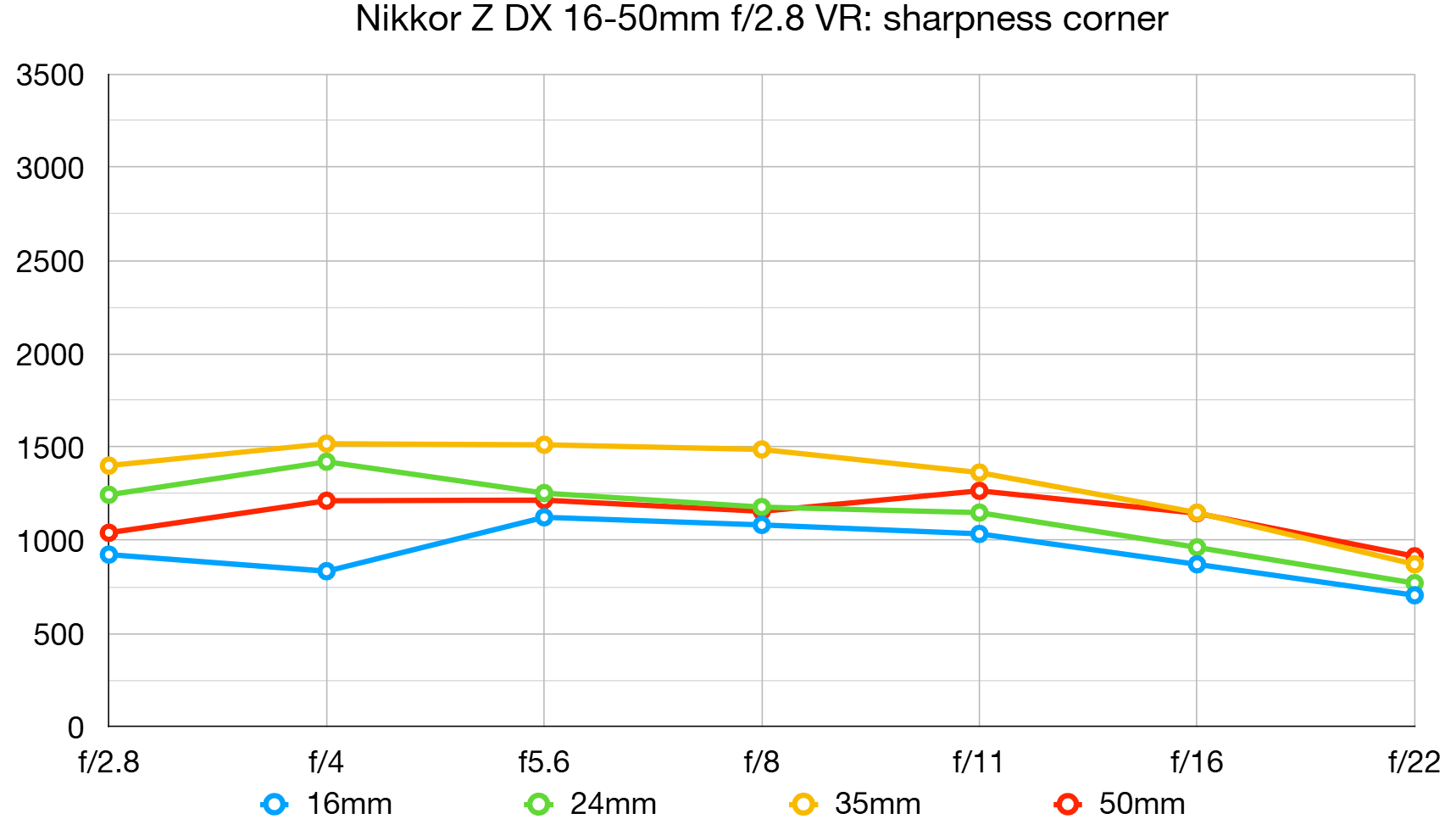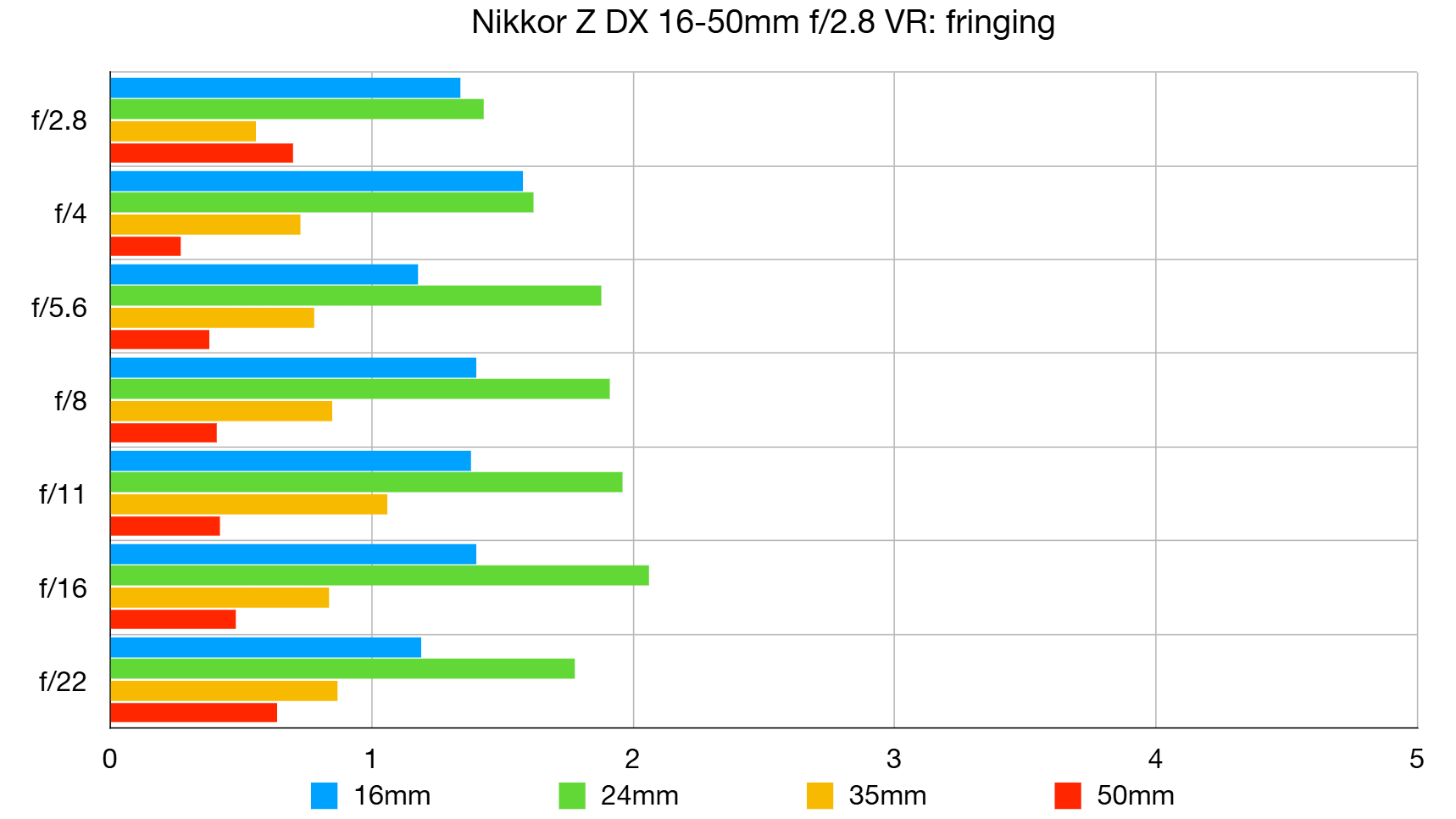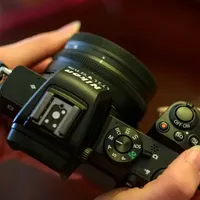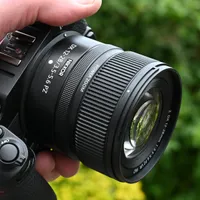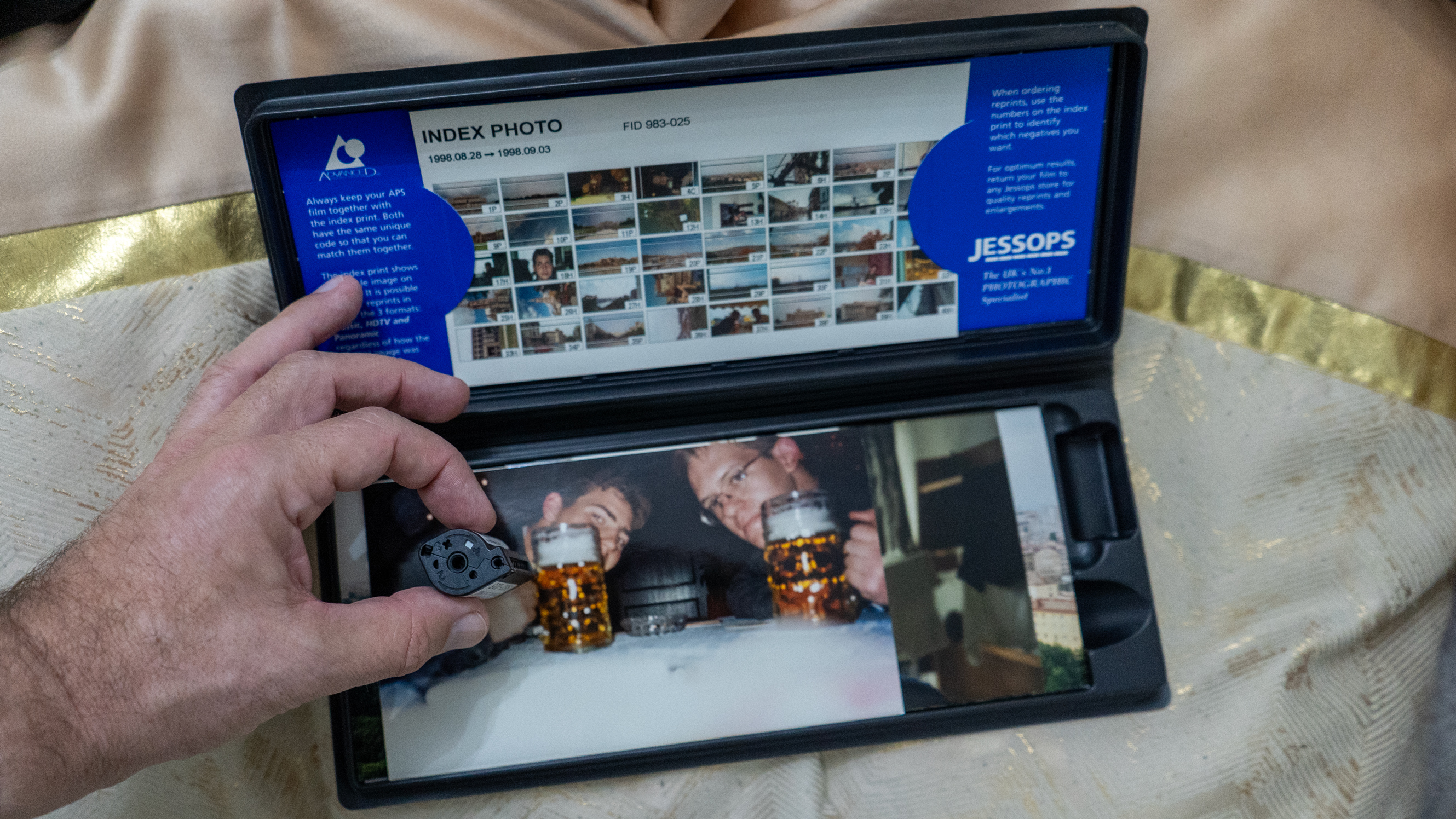Digital Camera World Verdict
I think the Nikon Z DX 16-50mm f/2.8 VR mostly looks and feels the business. Nikon Z DX lenses are generally plastic, right down to and including the mounting plate. This new ‘trinity’ zoom is relatively robust with a metal, weather-sealed mounting plate and premium quality feel. Its constant f/2.8 aperture is its killer feature as far as I’m concerned, backed up by effective optical stabilization, highly attractive image quality and impressive all-round performance for both stills and video. However, I feel a bit let down by the lack of quick-access switches for A/M focus modes and VR on/off.
Pros
- +
Fast and constant f/2.8 aperture
- +
Upmarket build quality
- +
Optimized for hybrid shooting
- +
4.5-stop optical VR
Cons
- -
No A/M focus mode switch
- -
No VR on/off switch
- -
Thin control ring
Why you can trust Digital Camera World
I’ve never thought that crop-sensor cameras are for beginners and intermediate photographers, whereas full-frame cameras are for enthusiasts and professionals. However, I do think that for top-class image quality and performance, as well as for durability, high-performance crop-sensor cameras need to be backed up by similarly high-grade lenses. That’s certainly not lost on companies like Fujifilm, OM System, and Panasonic, judging by the strength and breadth of their APS-C and Micro Four Thirds ranges.
But what about Nikon? I love the style and substance of the Nikon Zfc. Shifting up a gear, the newer Nikon Z50 II is a proper little powerhouse. However, while the diminutive, lightweight, and inexpensive Z DX 16-50mm f/3.5-6.3 VR and Z DX 50-250mm f/4.5-6.3 VR kit zoom lenses perform pretty well, they have sluggish aperture ratings, plastic mounting plates, and are certainly not of a pro-grade standard.
Naturally, you can use FX (full-frame) format Nikon Z system lenses on DX (APS-C) cameras, but they’re bigger, heavier, and pricier than they need to be. That’s because they need to produce an image circle that’s large enough to cover an FX rather than DX format image sensor. The new Z DX 16-50mm f/2.8 VR makes Nikon’s DX format mirrorless cameras a much more viable proposition for creative and enthusiast photographers, as well as for hybrid stills/video shooters. It also aims to be one of the best Nikon Z lenses to date, as well as one of the best Nikon standard zoom lenses.
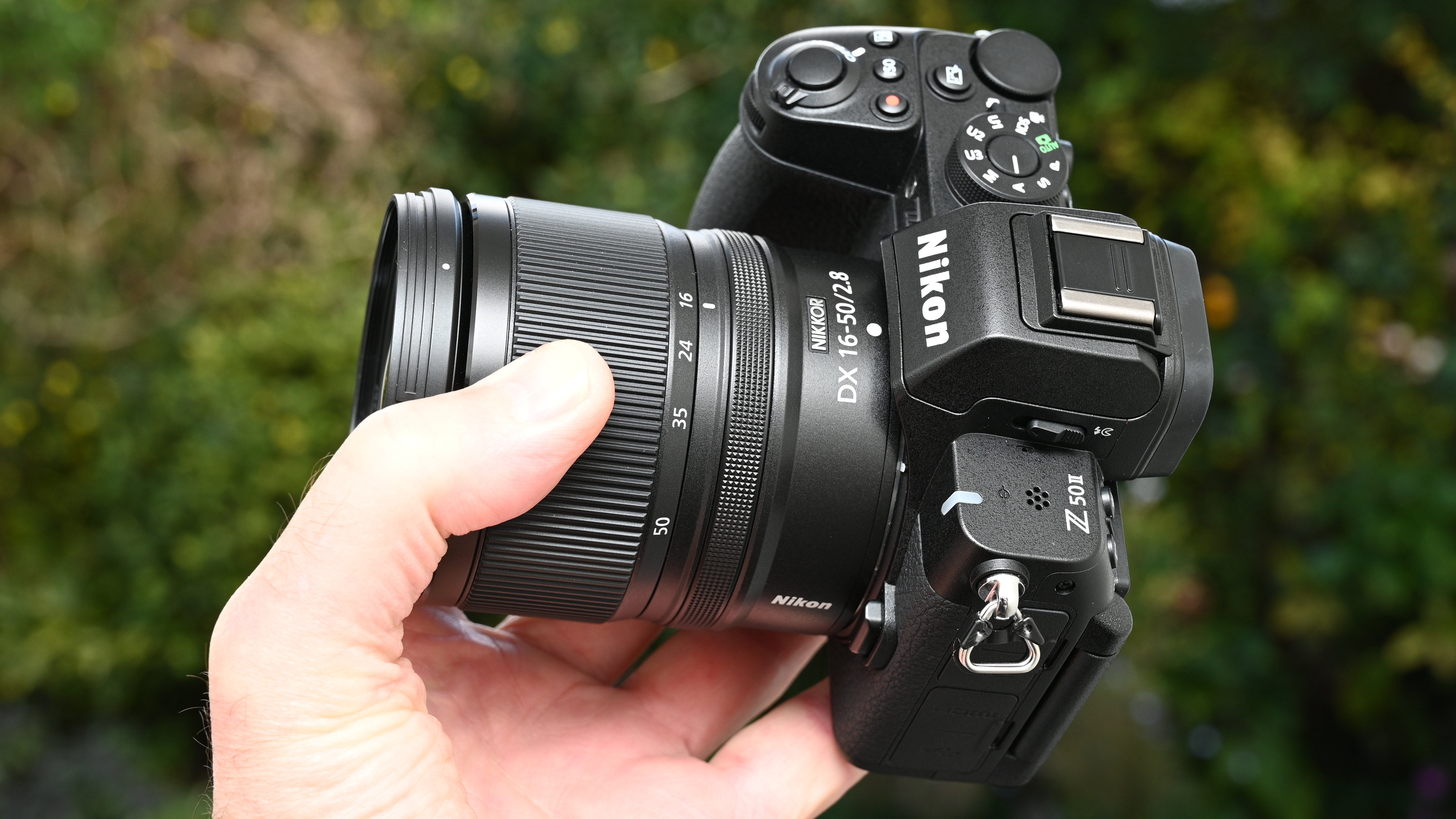
Nikon Z DX 16-50mm f/2.8 VR: Specifications
Mount options | Nikon Z (DX) |
Lens construction | 12 elements in 11 groups |
Angle of view | 83 to 31.5 degrees |
Diaphragm blades | 9 |
Minimum aperture | f/22 |
Minimum focus distance | 0.15m (Wide) 0.25m (Tele) |
Maximum magnification | 0.24x (Tele) |
Filter size | 67mm |
Dimensions | 75x88mm / 3x3.5in |
Weight | 330g / 11.7oz |
Nikon Z DX 16-50mm f/2.8 VR: Price
Let’s put the price of this new lens into context. It lists at $799 / £897 / AU$1,299, and that’s about three times the price of the Z DX 16-50mm f/3.5-6.3 VR. To be honest, I’d expect nothing less. After all, this lens is much more geared to enthusiast/professional use than being aimed at the general consumer market.
Indeed, the only other Nikon DX format constant-aperture f/2.8 standard zoom that I’ve ever seen was the ancient Nikon AF-S DX 17-55mm f/2.8, which launched all the way back in 2003 and had a price tag nearly twice as heavy as for the new Z-mount lens.
And in the full-frame camp, the recently launched Nikon Z 24‑70mm f/2.8 S II costs $2,797 / £2,599 / AU$4,599. All things considered, the new Z DX trinity zoom looks like it might just be a bit of a bargain.
Nikon Z DX 16-50mm f/2.8 VR: Design & Handling
One of my pet hates is DX or APS-C format standard zooms that kick off at 18mm at the short end. That’s roughly equivalent to 28mm on a full-frame camera, and I really miss a more expansive wide-angle view. The design of this lens is based on a 16-50mm zoom range, equating to 24-75mm in full-frame terms, and giving much more generous wide-angle coverage. That’s a tick in the first box for me, and indeed, the lens beats typical full-frame 24-70mm trinity standard zooms at the long end, with marginally more telephoto reach. Happy days!
The best camera deals, reviews, product advice, and unmissable photography news, direct to your inbox!
Along with its versatile zoom range for everyday, walkabout, and travel shooting, the lens’s killer feature is its relatively fast and constant f/2.8 aperture. By comparison, the retractable Z 16-50mm zoom that’s often sold as a ‘kit lens’ with Nikon Z DX format cameras has a variable f/3.5-6.3 aperture rating. Diving into the math, that makes the f/2.8 lens two-thirds of a stop faster at the short end, and a sizeable two-and-a-third or 2.33 stops faster at the long end.
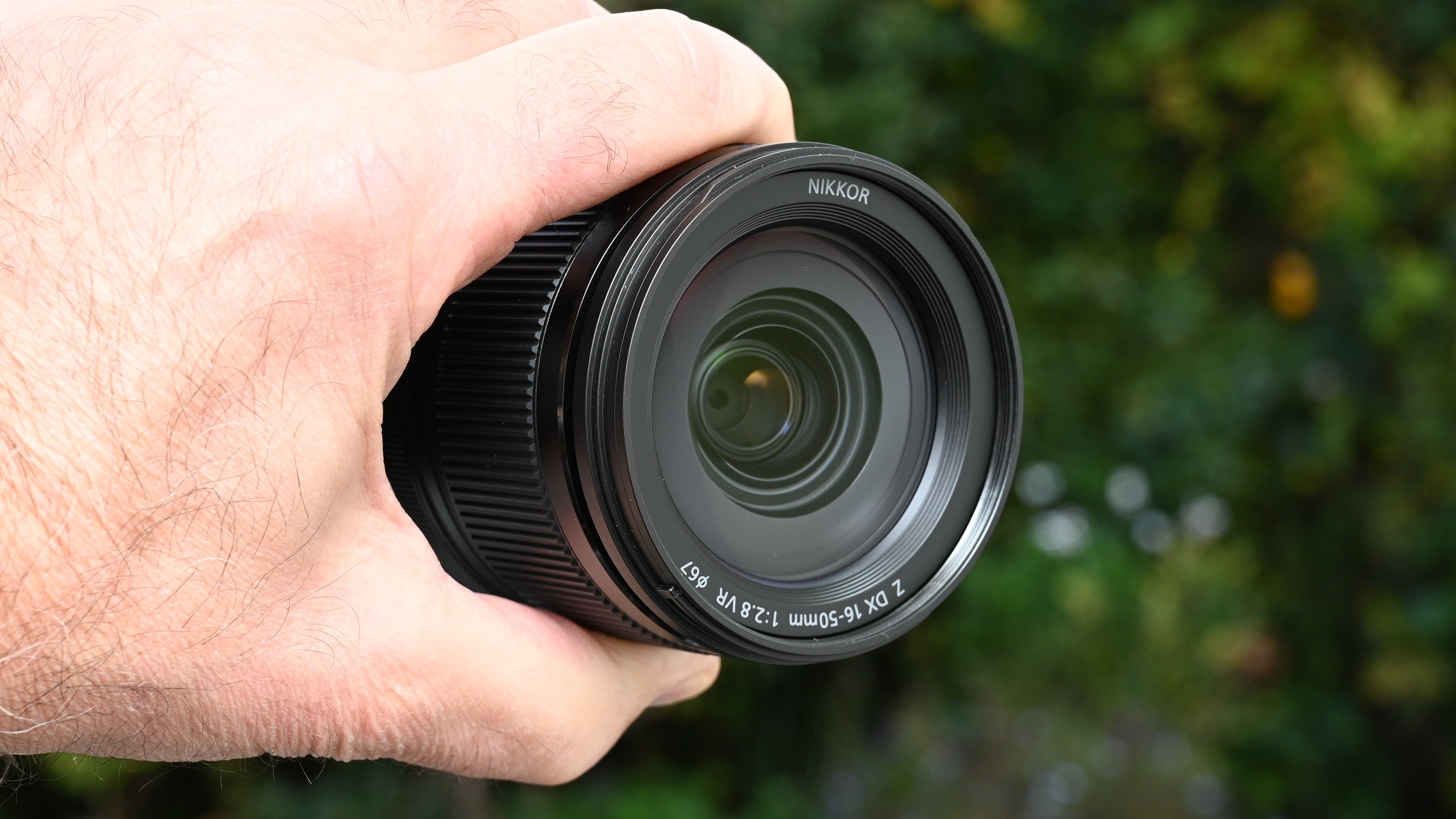
What’s so great about the relatively fast and constant aperture rating? First up, you can gain a tighter depth of field, especially towards the long end of the zoom range. That’s great news for isolating subjects within a fussy scene by blurring the background. Next up, you can get faster shutter speeds under low lighting levels for freezing the action, without bumping up your camera’s ISO setting into the stratosphere and killing your image quality. And last but not least, if you’re shooting in manual exposure mode with a wide aperture, it’s very useful if your aperture doesn’t change when you adjust the zoom setting.
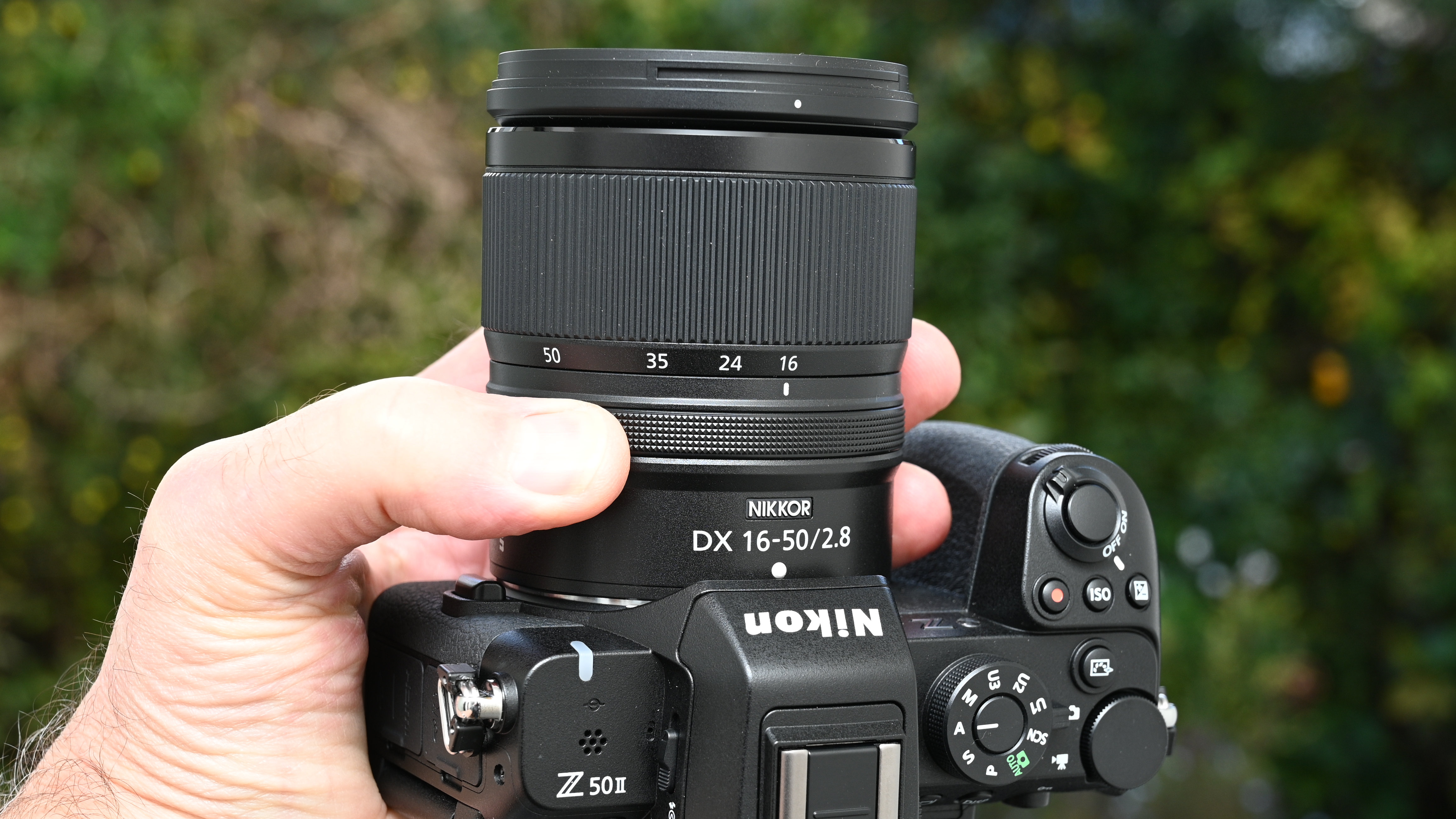
If you’re like me, you’re put off by the typically big, chunky, and heavy build of full-frame trinity zoom lenses. Coupled with a relatively lightweight and slimline mirrorless camera, it can often feel like a case of the tail wagging the dog, putting the cart before the horse, or any other analogy that takes your fancy. Sure, this lens is bigger and heavier than the unfeasibly tiny and featherweight Z DX 16-50mm f/3.5-6.3 VR, but it’s still remarkably compact and easily manageable for a constant f/2.8 zoom. Talking in numbers, it measures just 75x88mm / 3x3.5in in size and weighs a mere 330g / 11.7oz.
For comparison, the length of the lens is only 4mm or 0.16” more than the width of the Nikon Z 24‑70mm f/2.8 S II full-frame lens, and less than half the weight. It also has a relatively small 67mm filter attachment thread, compared with 77mm for the 24-70mm Mark II and 82mm for the original full-frame zoom. And lest we forget, the Nikon AF-S 24-70mm f/2.8E ED VR for DSLRs weighed in at over a kilogram, or 2.35lb, making it more than three times the weight. Long story short, this DX trinity zoom is very easily manageable and very easy to live with. It’s definitely one for the journey.
The images above and below show the lens at its minimum and maximum zoom settings respectively. As with most standard zoom lenses, it’s physically shortest at its most wide-angle setting, and longest at the telephoto end, although some standard zooms are physically shortest at mid-range settings. Either way, there’s not a huge amount of physical extension as you stretch through the zoom range.
Naturally, compared with really fast prime lenses, an f/2.8 aperture isn’t super-speedy. Either way, you might want to use a narrower aperture to get a larger depth of field when you want more of the scene to be rendered sharply. With that in mind, I’m glad that the lens features optical VR (Vibration Reduction), AKA optical image stabilization. According to Nikon, it’s worth up to 4.5 stops in fending off the blurring effects of camera shake. To my mind, it’s a vital inclusion in the lens’s design, given that there are no Nikon DX-format cameras to date that feature IBIS (In-Body Image Stabilization).
In terms of glass, the lens features 12 elements in 11 groups. That’s a lot more than the 9 elements in 7 groups, featured in the f/3.5-6.3 kit lens. Both lenses feature one ED (Extra-low Dispersion) element but the f/2.8 lens has two aspherical elements rather than four, as featured in the smaller lens to reduce the physical size to an absolute minimum.
How about build quality? All of the other Nikon Z DX zoom lenses that I can think of, plus the Z DX 24mm prime, have plastic rather than metal mounting plates. You could argue that it helps to keep the weight of the lens to an absolute minimum, which is a fair point. But for the sake of quality, I’d prefer a ‘proper’ metal mounting plate every time, and I’m pleased to see one on this lens. Nikon doesn’t say how extensively the lens is weather-sealed but inspection reveals there’s at least a rubber gasket fitted to the metal mounting plate, to minimize the ingress of dust and moisture between the lens and camera body.
Handling feels very assured, but isn’t entirely to my liking. I’m in favor of physical switches on the side of the lens barrel, giving quick access to auto/manual focusing modes and VR on/off. Neither are fitted to this lens, forcing you to rummage around in camera menus to make the changes. I feel that’s less convenient and more time-consuming, but it does at least enable a cleaner and more compact design. The customizable control ring for manual focusing and alternative adjustments is also a little on the thin side for comfortable use, but does operate in smooth silence.
Most of Nikon’s more budget-friendly Z-system lenses in both DX and FX categories are supplied without a lens hood. I’m not a fan. I’ve hardly ever seen low-cost, third-party lenses supplied without a hood, and I resent having to pay extra for the privilege of using one as an ‘optional extra’. Happily, this lens is supplied complete with a petal-shaped HB-118 hood – good job too as it costs nearly $50 to buy separately.
Nikon Z DX 16-50mm f/2.8 VR: Performance
If I’m going to spend three times as much buying this lens in preference to the ultra-compact (but rather adorable) Z DX 16-50mm f/3.5-6.3 VR, I’d expect it to be sharper. The f/2.8 zoom doesn’t disappoint. At nearly all zoom and aperture settings, it’s noticeably sharper from the middle of the frame right out to the extreme edges and corners. There’s a little more color fringing in the 16-35mm sector of the zoom range, but this is easily taken care of by the automatic in-camera correction of all Nikon Z-system cameras.
For some (me included), subtle differences in sharpness aren’t the big news. It’s often more about the quality of bokeh. With this lens being 2.33 f/stops faster at the long end of the zoom range, it can attain a tighter depth of field with the prospect of smoother bokeh. I took the photos above and below of a phrenology head set against the backdrop of some garden plants. The above shot was taken at 50mm with the baby 16-50mm lens at its widest aperture of f/6.3. The shot below was taken wide-open with the f/2.8 lens at the same 50mm focal length. You can see that the bokeh is a lot smoother with the faster lens, although it’s still not a match for a faster 50mm f/1.4 or f/1.8 prime lens.
The actual quality of bokeh is nice and smooth. The shot below is a close-up of some dewdrops hanging from the spindly branches of an acer tree. You’ll see that the ‘bokeh disks’ caused by bright defocused droplets of water with the light coming from behind them are well-rounded, right out to the edges and corners of the frame. That’s pretty impressive, and bokeh disks are also free of the glitchy ‘onion ring’ effect.
A facet of performance that’s always on my wish list is fast and consistently accurate autofocus. The lens obliges with a linear stepping motor-based system that’s both rapid and near-silent. It’s also typical of the breed in delivering smooth autofocus transitions when shooting video. That seems to be more important than ever nowadays, with so many of us turning our hand to ‘hybrid’ shooting. And with that in mind, there are some other important performance enhancements packed into the lens.
Along with the autofocus and optical stabilization being beneficial for videography as well as for shooting stills, the lens is designed to have minimal ‘focus breathing’. As such, the perspective or angle of view remains fixed when you transition the focus distance from near to far, or visa versa. Next up, there’s ‘hi-res zoom’, which enables you to effectively double the focal length of the lens to as much as 100mm, without suffering any loss of sharpness when shooting video. Along with many other Nikon Z lenses, there’s also a stepless control ring that works not only for manual focusing, but also for smooth and silent aperture adjustments, ideal when shooting video.
Nikon Z DX 16-50mm f/2.8 VR: Sample Images
This gallery of example images was shot in the cathedral and surrounding city of Wells, in the south-west of England. I set out to cover all the bases, using everything from the shortest to the longest zoom settings, taking close-ups as well as regular-distance shots, and employing the widest f/2.8 for a few shots to show the minimum depth of field and quality of bokeh. Overall, I’m very pleased with the results that the lens has delivered.


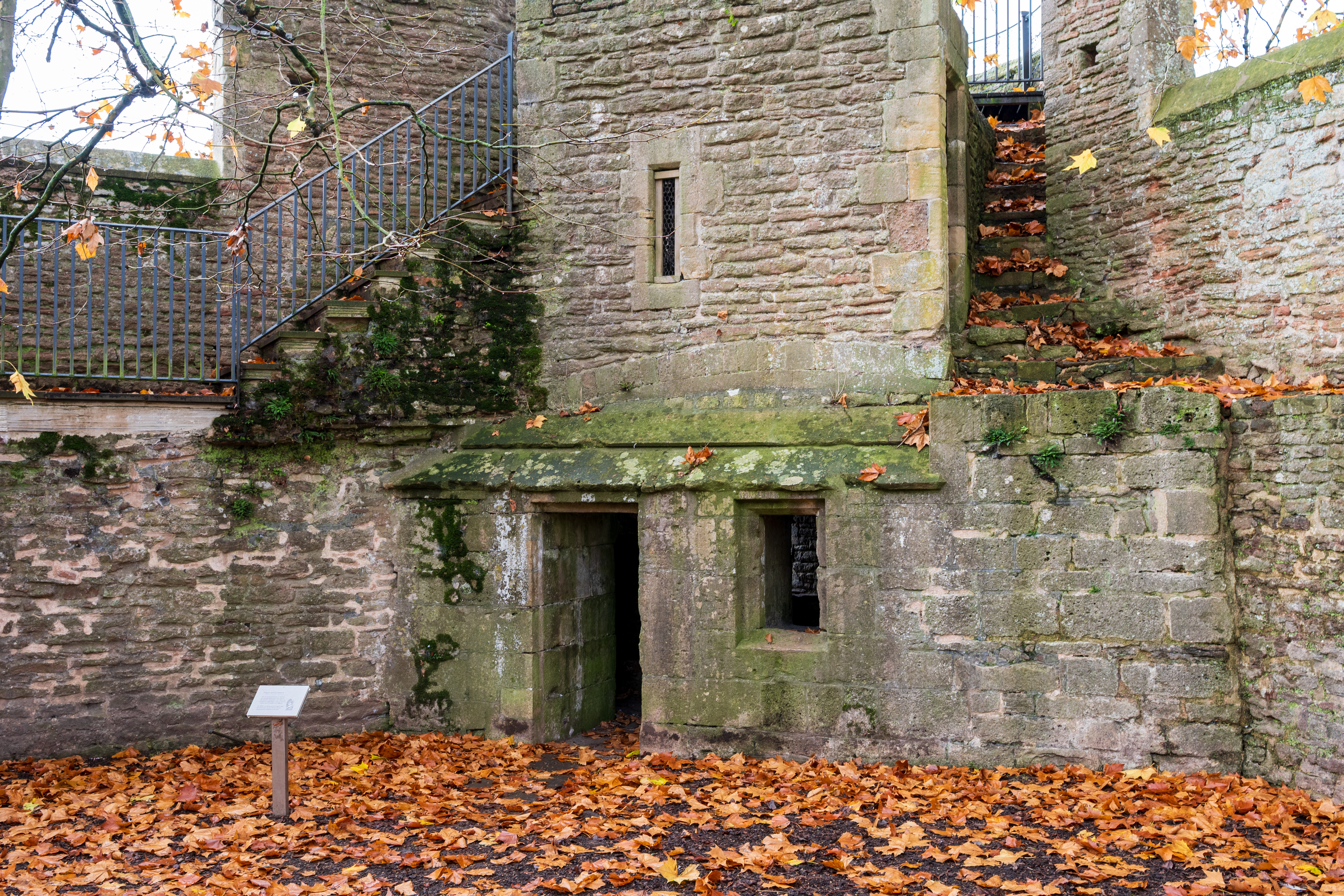














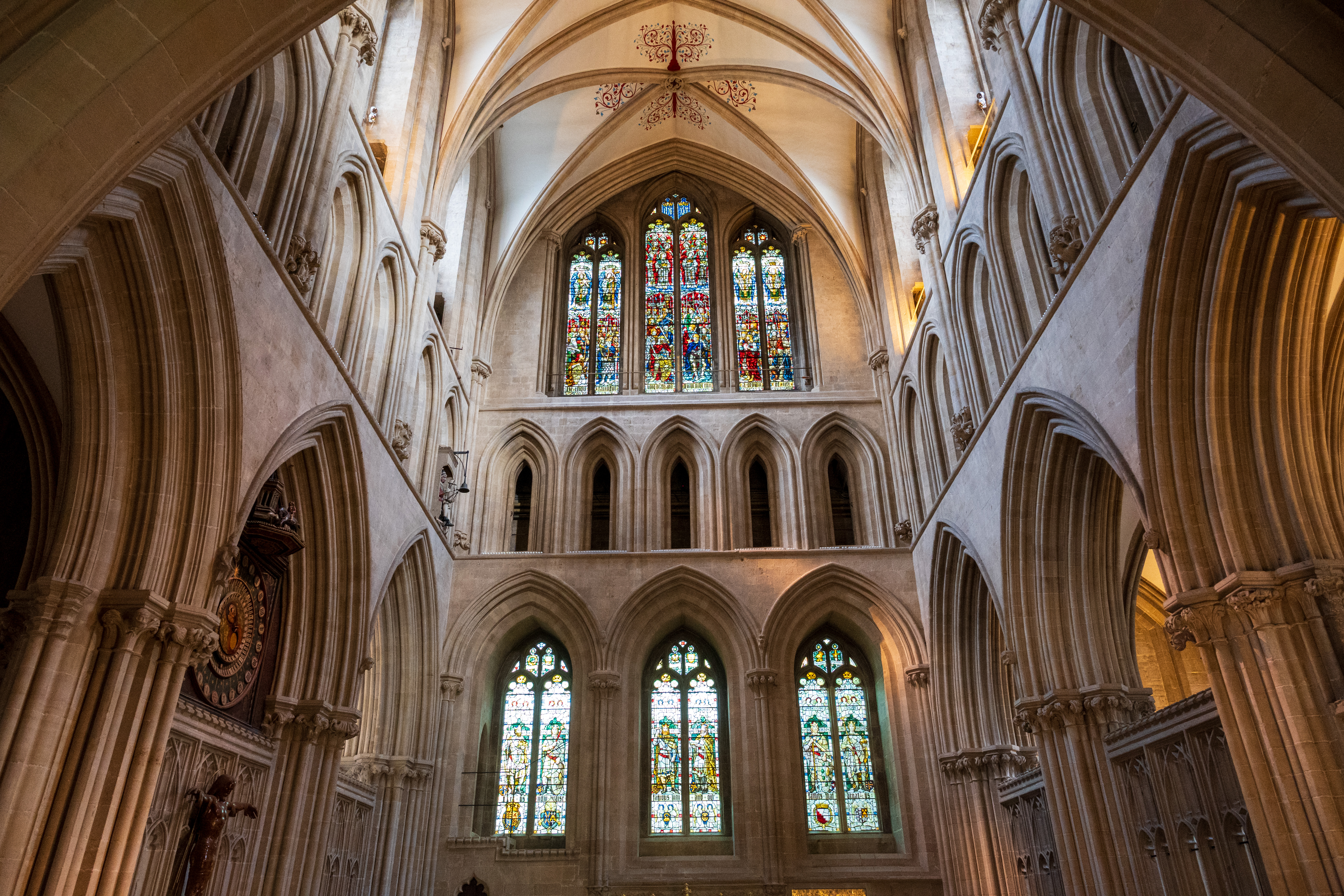


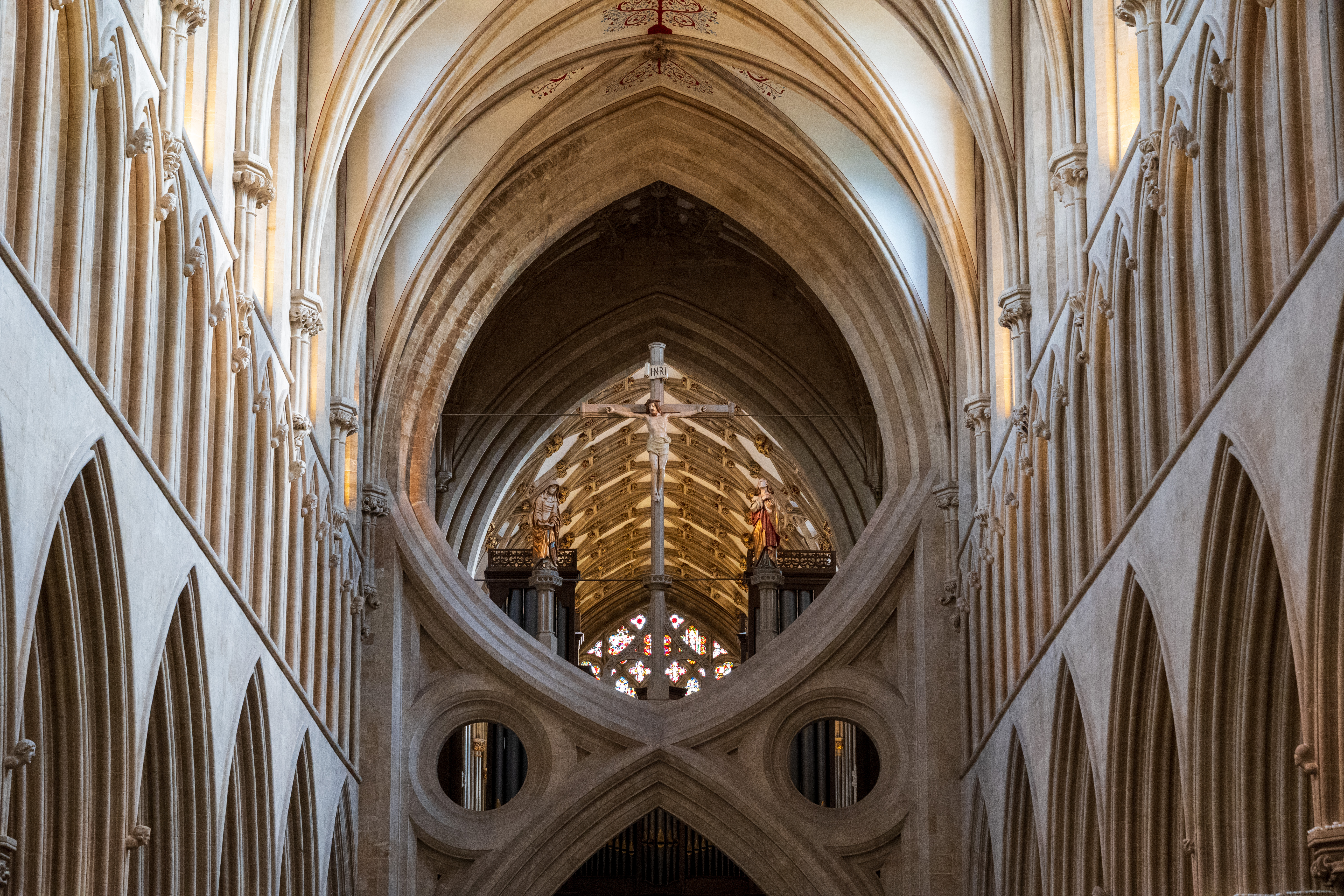





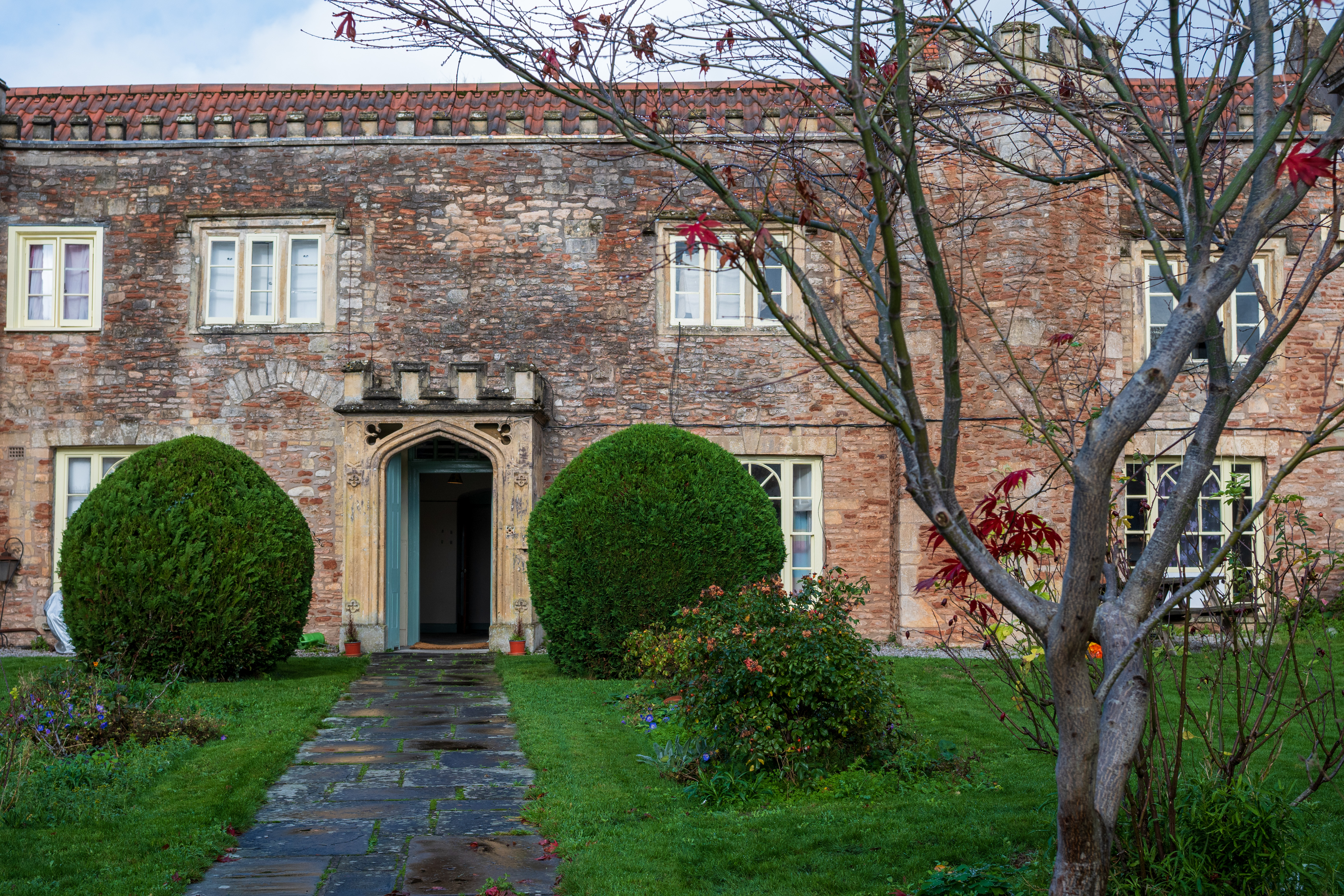

Nikon Z DX 16-50mm f/2.8 VR: Lab Results
We run a range of lab tests under controlled conditions, using the Imatest Master testing suite. Photos of test charts are taken across the range of apertures and zooms (where available), then analyzed for sharpness, distortion and chromatic aberrations.
We use Imatest SFR (spatial frequency response) charts and analysis software to plot lens resolution at the center of the image frame, corners and mid-point distances, across the range of aperture settings and, with zoom lenses, at four different focal lengths. The tests also measure distortion and color fringing (chromatic aberration).
Sharpness:
Sharpness is excellent at the center of the frame and remains highly impressive right out to the extreme edges and corners. Indeed, our lab results for sharpness are good enough to rival those of many prime lenses, throughout the entire range of focal lengths served up in this zoom lens.
Fringing:
When uncorrected, color fringing can be noticeable at the edges and corners of the image frame, especially in the 16-35mm sector of the zoom range. However, Nikon Z-system cameras like their more recent DSLR forebears have highly competent automatic correction that takes care of fringing completely.
Distortion:
As they say, if something looks too good to be true, then it probably is. The lab results for distortion look impossibly good for a standard zoom lens and sure enough, that’s because the lens relies heavily on automatic correction, which can’t be switched off in the camera’s menu system.
Nikon Z DX 16-50mm f/2.8 VR: Verdict
I love the unfeasibly small and featherweight build of this lens’s baby sibling, the Z DX 16-50mm f/3.5-6.3 VR kit lens, but the main attraction of the Nikon Z DX 16-50mm f/2.8 VR is its relatively fast and constant f/2.8 aperture. This puts it into ‘trinity’ standard zoom territory and, as such, it’s still a refreshingly compact and lightweight package.
I like the upmarket build quality, compared with most Nikon Z DX lenses, that in this case stretches to a metal rather than plastic mounting plate, complete with a weather-seal gasket. I’m also a fan of the 4.5-stop optical stabilization and that the lens is optimized for hybrid shooting, being equally adept at video as well as stills.
I’m less enamored with the lack of switches for A/M focus modes and VR on/off, as well as the thinness of the customizable control ring, but I can live with all that, given the compact nature of the lens. All in all, it’s a very good performer, and although it doesn’t come cheap, it’s well worth the money.
Features ★★★★☆ | It’s got a solid feature set that includes a constant f/2.8 aperture and 4.5-stop VR, and unlike most Z DX lenses, it comes complete with a hood. |
Design ★★★★☆ | The design is relatively compact and lightweight for a ‘trinity’ zoom but lacks switches for A/M focus modes and VR on/off. |
Performance ★★★★★ | The lens is super-sharp and has very fast and consistently accurate autofocus, although it relies heavily on automatic in-camera correction for distortions. |
Value ★★★★☆ | It’s expensive for a Nikon Z DX lens but very much more affordable than the same kind of lens for full-frame cameras. |
Alternatives
To my mind, there’s something to be said for sticking with the amazingly compact and lightweight retractable Nikon Z DX 16-50mm f/3.5-6.3 VR kit zoom lens and buying an even faster 50mm f/1.4 or f/1.8 lens for a really tight depth of field, ideal for portraiture and still life photography.
If you’re after a zoom lens that’s more ideal for vlogging and wide-angle videography, you can’t go far wrong with the Nikon Z DX 12-28mm f/3.5-5.6 PZ VR. It’s small and lightweight, yet features a PZ motorized ‘power zoom’ mechanism for super-smooth zooming while shooting video. It has an ‘effective’ 18-42mm zoom range in full-frame terms.
Matthew Richards is a photographer and journalist who has spent years using and reviewing all manner of photo gear. He is Digital Camera World's principal lens reviewer – and has tested more primes and zooms than most people have had hot dinners!
His expertise with equipment doesn’t end there, though. He is also an encyclopedia when it comes to all manner of cameras, camera holsters and bags, flashguns, tripods and heads, printers, papers and inks, and just about anything imaging-related.
In an earlier life he was a broadcast engineer at the BBC, as well as a former editor of PC Guide.
You must confirm your public display name before commenting
Please logout and then login again, you will then be prompted to enter your display name.


